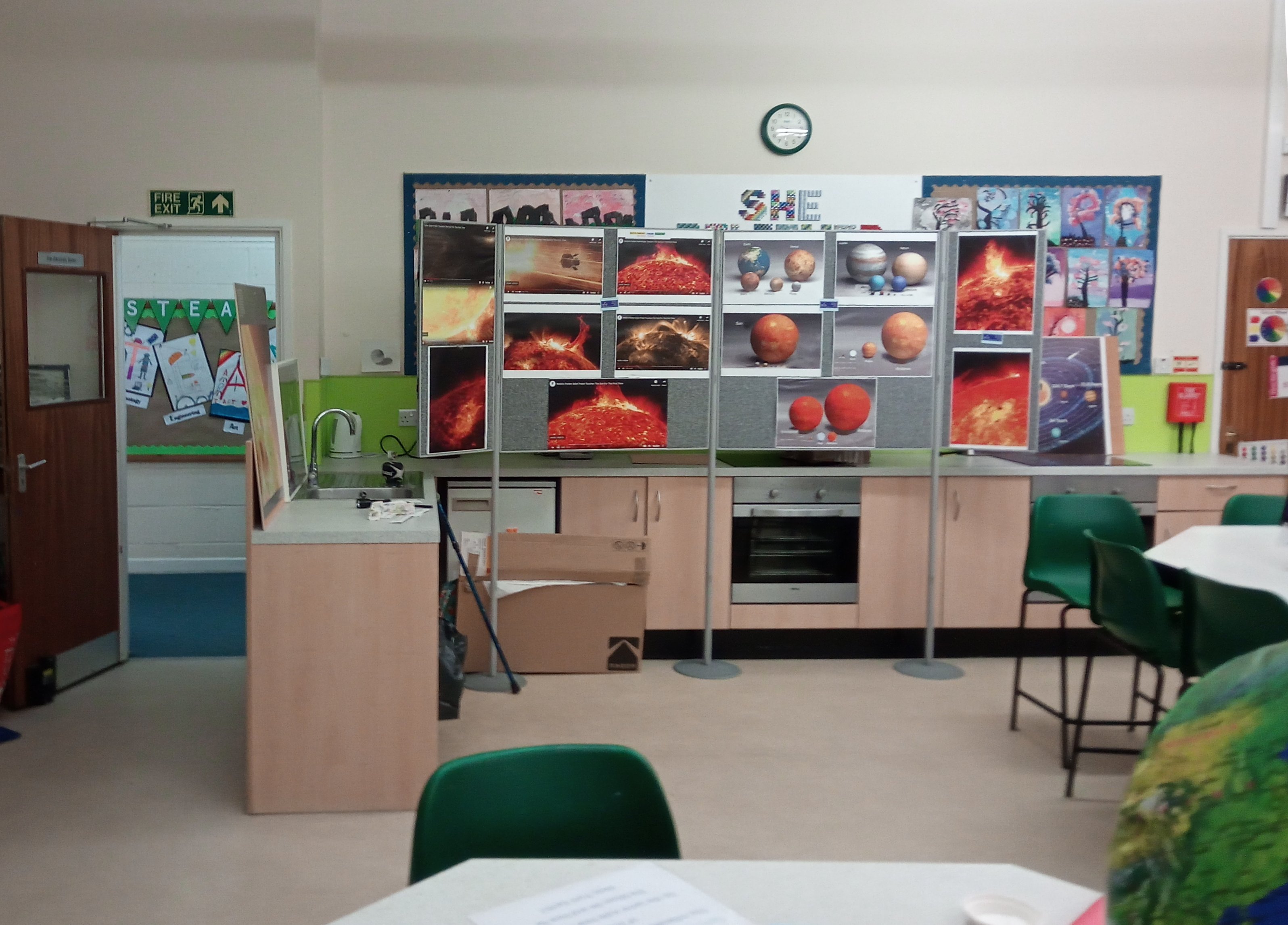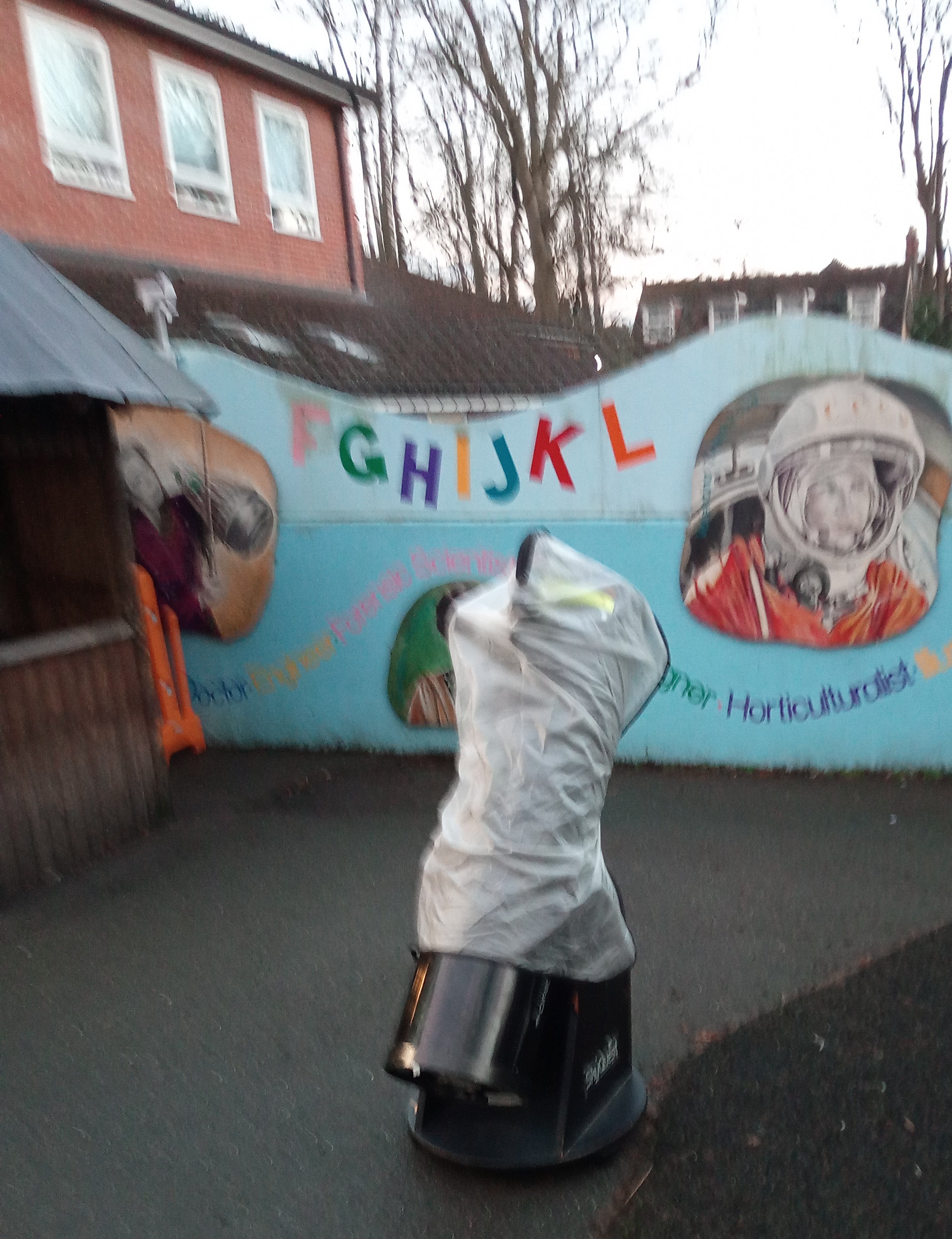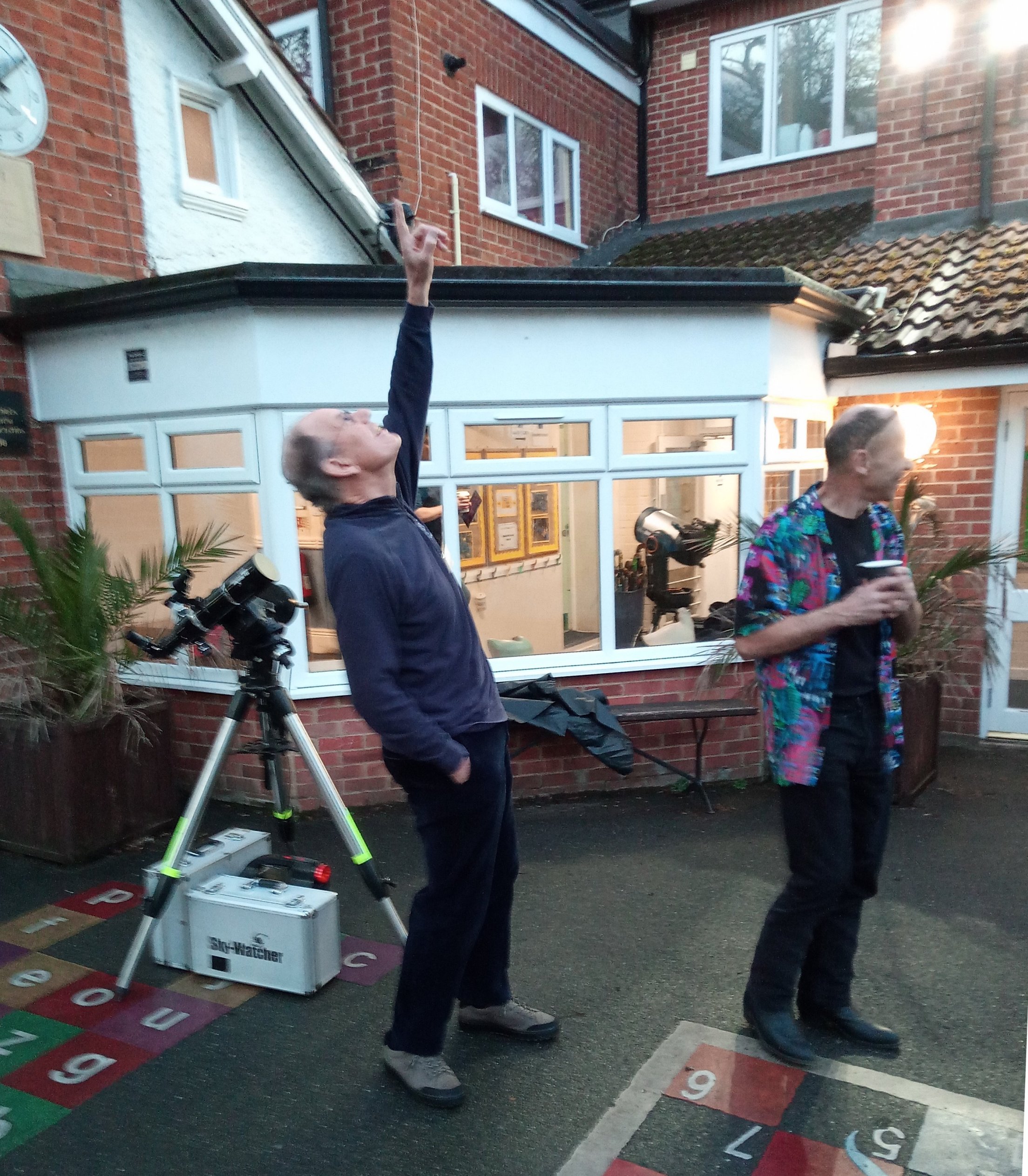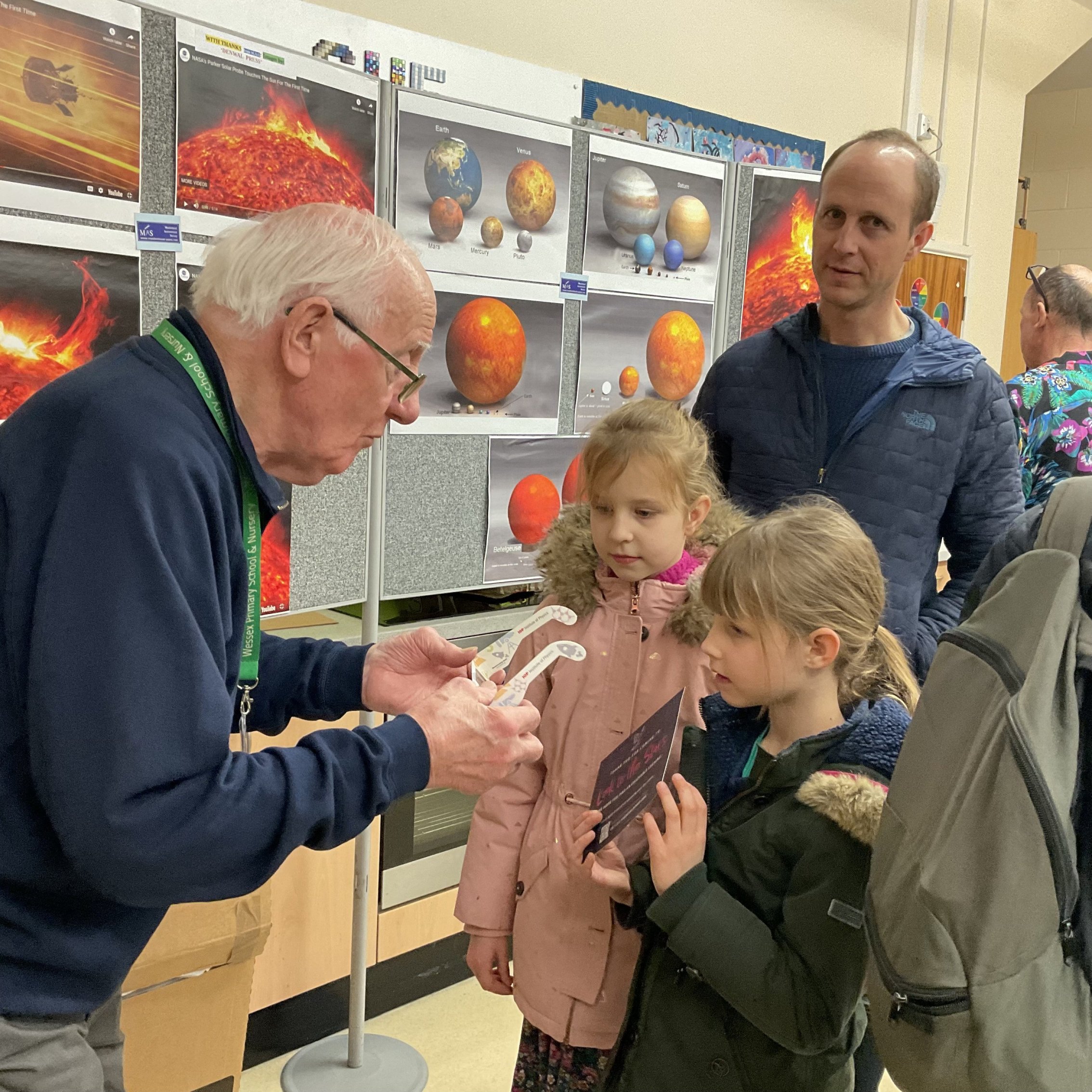Laser Pens |
Maidenhead Astronomical Society may use Laser Pens as a pointer during outreach events and talks. Any such use will comply with our Laser Pen Policy, which may be downloaded from here (.pdf)
Essentially, only responsible adults pre-approved by MAS are allowed to use a laser pointer at an outreach event. Children under the age of 18 and non-approved adults are not permitted to use the laser pen at any time. Any member of the public bringing their own device (without pre-approval) is asked not to use it during one of our events (and will be asked to leave if they are not willing to comply with this request).
Future Public Events |
This page is dedicated to events promoted by Maidenhead Astronomical Society aimed at bringing an awareness and appreciation of astronomy to the general public. Almost all of the Events listed here are run by MAS (the few that are not are plainly marked)
Details of future planned events are limited to those open to the general public (Members should look in the Members Only section for details of future events not open to the public - which includes most of our local Outreach activities (schools, cubs, brownies etc)).
Future events are listed in date order, next planned first. Be aware that events can change (usually due to the weather :-) ) so please check nearer the event before making a journey
Note. MAS holds Public Liability Insurance via our membership of Federation of Astronomical Societies. The Policy Document for 2022-23 (pdf) is available on request (it can be found in the Members section)
(+) 7 Mar 2025 (and 22) Major Lunar Standstill
(+) 29 Mar 2025 Partial Solar Eclipse
(+) 12 Aug 2026 Solar Eclipse
(+) 26 Jan 2028 annular Solar Eclipse
(+) 1 Jun 2030 annular Solar Eclipse
(+) 13 Nov 2032 Transit of Mercury
(+) 7 Nov 2039 Transit of Mercury - (2nd of pair)
(+) 28 Jul 2061 Halleys Comet returns
(+) 23 Sep 2090 Total Solar Eclipse - (the next visible from UK)
Reports from our Outreach & Event activity |
Here you will find reports of MAS events held in the last 10 years or so (i.e. since the MAS web site effectively 'took over' from printed newsletters as the primary means of 'reporting back' to the membership). Some details have been removed to allow for public viewing
The Members Only section contains details of MAS History going back to our formation in 1957
(+) 2 May 2024 Newlands Girls School - (outreach)
(+) 26 Apr 2024 1st Britwell Scouts - (outreach)
(+) 27 Feb 2024 1st Cookham Beavers(2) - (outreach)
(+) 26 Feb 2024 1st Cookham Beavers(1) - (outreach)
(+) 6 Feb 2024 7th Windsor Brownies - (outreach)
(+) 15 Jan 2024 Cookham Dean Primary School - (outreach)
(+) 12 Jan 2024 1st Cippenham Cubs - (outreach)
(+) 6 Dec 2023 Bisham Brownies - (outreach)
(+) 22 Nov 2023 Furze Platt Cubs (2nd pack) - (outreach)
(+) 21 Nov 2023 Furze Platt Cubs (1st pack) - (outreach)
(+) 10 Nov 2023 Trinity St Stephans School - (outreach)
(+) 2 Sep 2023 Cookham Regatta
(+) 19 Apr 2023 Newlands School - (outreach)
(-) 18 Mar 2023 Highfield Prep School Look to the Stars - (Public Event)
18th March 2023, Saturday 6pm - 9pm. An event presented and hosted by Highfield Prep School.

Overall Report by Andy
(ed) Telescopes were set up in the playground area outside and the main hall set aside for talks. Plus one of the classrooms was set up as a demonstration area.
This included Arthur with his range of colourful posters that showed the relative sizes of bodies in the Solar System and our Galaxy. He was kept very busy explaining what they showed and answering a range of excellent questions.
The relative sizes and distance between Earth and the Moon were shown using an inflatable Earth, about the size of a football, a juggling ball Moon, to the same scale, and a reel of string was well received. The moon is approximately 10 Earth diameters from our home and the string was 10 inflatable Earth diameters long. Youngsters were asked to estimate the scale distance between Earth and Moon. The average guess was around 30cm. They were then given the Moon and one end of the string and asked to walk away from someone holding the Earth and a tube with the uncoiling string. Onlookers and the Moon holders were amazed to see how far the Moon was from Earth, which was nearly 8.0 meter in this model.
The reason that Earth experiences seasons is because it’s axis of spin is tilted by 23.5 degrees from vertical with respect to the sun. This was shown using a large inflatable Earth and two pieces of swimming spaghetti to represent the energy coming from the sun. One end of each of the latter was cut at an angle to show how much a Sun beam spreads out in winter, when the northern hemisphere is tilted away from the Sun, compared to summer, when the north is tilted towards. The winter tilt away from the sun spreads the energy over a much larger area than in the summer.
Also on display was a laptop with a continuous slideshow of photos taken by MAS members, a pair of binoculars on a tripod, cardboard refractor telescopes and a mini Newtony refactor with photos that were taken with it in combination with a mobile phone.
Free Science learning resources from the Institute of Physics, IOP, were given to parents to use at home with their children. The latter were able to take home pens, pencils and a rubber that were also supplied by IOP.
Arthur, James, Adrian D, Jim and Andy spent time in this room showing the demonstrations and answering questions from the children and their parents.
(ed) See individual reports and photos below :-
Report by Matt
During the evening, members of MAS delivered a series of presentations, in the main hall. Both runs of the presentations were very well attended and questions were asked either out loud for the whole audience to hear or folk came up afterwards for more information.
My Observing The Moon presentation was delivered to a full hall for the first run with around 20 attending the second.
Jim's talk was on "Exploring Mars" and Andy talked abort what might be seen in the sky (weather permitting) for the next nights in a talk entitled "Whats Up"


(left) Arthur's set up behind the main hall
(right) Arthur attending to some early visitors - later the room was so crowded you could hardly move !

(left) Steve's found a suitable spot in the playground to place his Dobsonian
(right) Looking back toward Robin, who's chosen a spot nearer the doors
(right) Robin setting up.

Jim wondering what Robin is looking at = Robin's spotted a Bat !

(left) Robin attending to an early visitor
(right) Robin explaining to Mum and daughter how a telescope works and where to look.
(right) a member of the public asks Robin if he can identify the brightest star = yes he can ! (it's Sirius)

(left) Arthur explaining how to safely look at the sun
(right)Arthur demonstrating how Eclipse Glasses work
James explaining the phases of the Moon.
Report by Adrian Running the Telescope Clinic
I had brought couple of telescopes, intending to set up outside with the others, but never got further than the music room where we had set up the telescope clinic. The clinic had a constant stream of visitors from the very start and I was fully occupied there for most of the evening! I lost count of how many came in with telescopes seeking advice on how to set up or use them; big thanks to Adrian D who joined me for the first hour or so to assist before moving outdoors to set up his telescope. Later, I set up a small telescope in the room just for fun viewing for some of the younger visitors who wandered in from time to time.
When things quietened down I was ready for a break and the refreshments provided were very welcome!
Towards the end of the evening - looking at the stars through Adrian D's Celestron Nexstar.This note last modified: 31st Mar 2023 14:11.